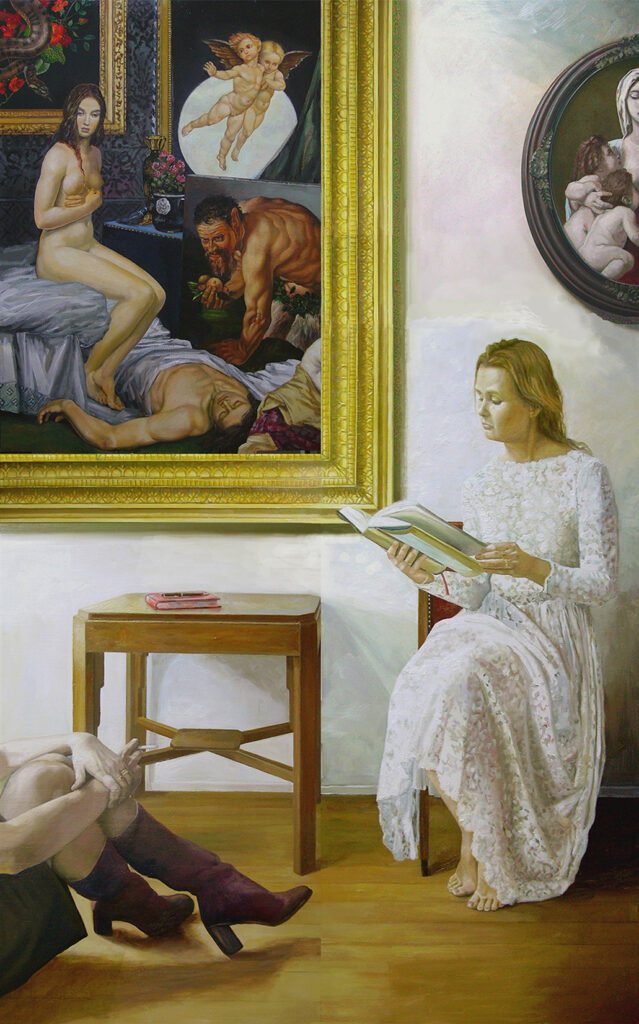The Alter Ego (320 x 200 cm)
Materials: Oil on canvas.
Symbolism: Duality. Double morality in general or double individuality in particular, like in still waters… also referring to the beginning of duality through the knowledge of good and evil and ambiguous Genesis traditions.
Genesis 1: 26-31 (The Creation)
Then God said: “Let us make man in our image, after our likeness. (…) So, God created man in his own image, in the image of God he created him; male and female he created them. And God blessed them. And God said to them, “Be fruitful and multiply and fill the earth and subdue it…
Genesis 2: 15-23 (Paradise)
The LORD God took the man and put him in the garden of Eden to work it and keep it. (…) Then the LORD God said, “It is not good that the man should be alone. I will make him a helper fit for] him.”(…) So the LORD God caused a deep sleep to fall upon the man, and while he slept took one of his ribs And the rib that the LORD God had taken from the man he made] into a woman and brought her to the man. Then the man said, “This at last is bone of my bones and flesh of my flesh; she shall be called Woman, because she was taken out of Man.
The Painting:
The serene woman in white reads to her tough Alter Ego. Of that other self she only can make a part visible. Moreover, that other one, that slumbers within, gives her an ambiguous feeling. She reads the book of John Milton (1606 -1674): Paradise Lost. The book is also full of contradictions. The painting above also refers to the novel. The painting on the right, representing unconditional love, is half visible.
The dimensions of the whole painting (200 x 320 cm) correspond to the Phi ratio, also golden section or Guilder cut. In de composition the Phi ratio spiral is embedded.

